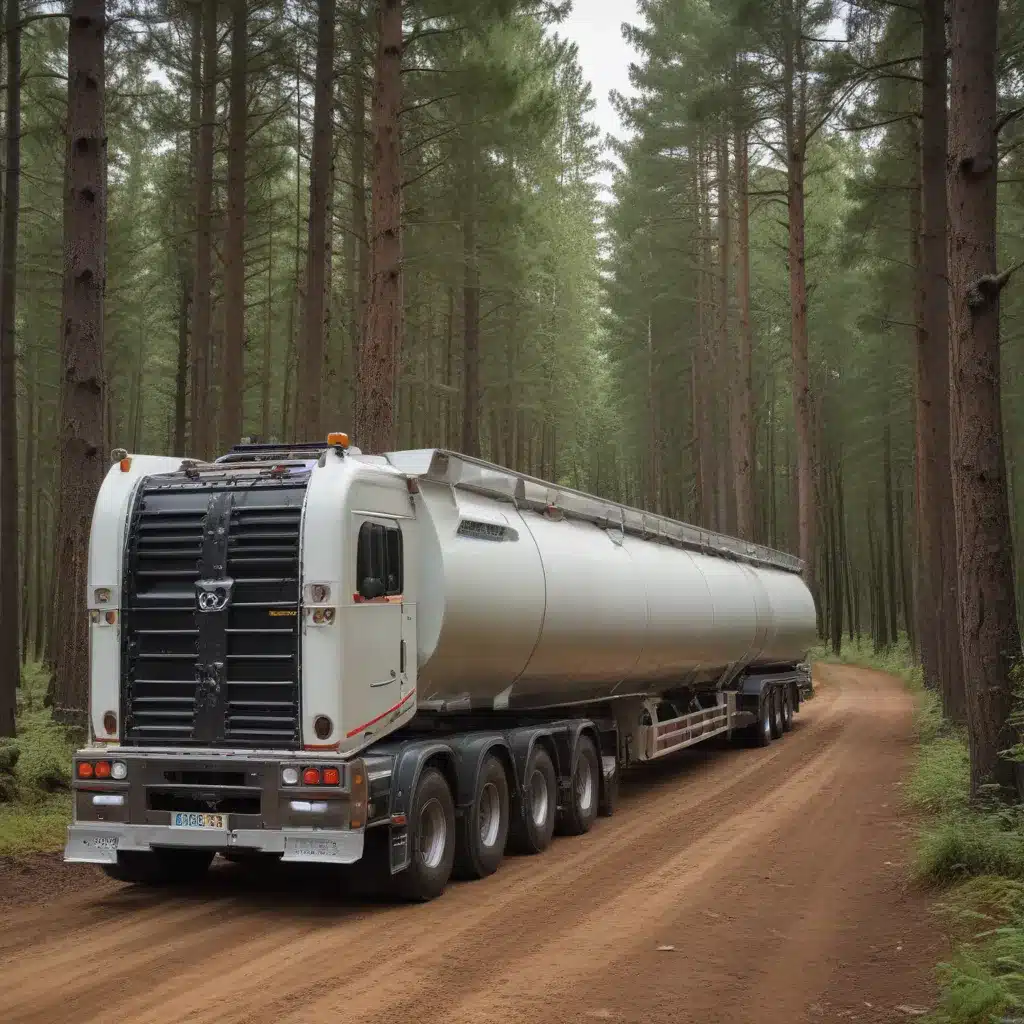As an experienced forestry contractor, I’ve seen firsthand how the design and performance of logging trailers can significantly impact the overall efficiency and sustainability of forestry operations. We learned this the hard way when dealing with challenging terrain during harvests… In this comprehensive article, we’ll dive deep into the key considerations for optimizing forestry trailer design, with a focus on enhancing aerodynamics and fuel efficiency.
Aerodynamic Considerations
Trailer Shape and Geometry
The shape and geometry of a forestry trailer play a crucial role in reducing aerodynamic drag and improving airflow around the vehicle. Conventional box-shaped trailers, commonly used in the forestry industry, often suffer from high drag coefficients ranging from 0.7 to 0.9. In comparison, modern passenger vehicle designs can achieve drag coefficients as low as 0.2, showcasing the significant room for improvement in trailer aerodynamics.
To address this challenge, manufacturers are exploring innovative trailer designs that streamline the transition from the truck to the trailer, minimizing the overall frontal area and creating a more seamless airflow. Features such as a curved windshield, mid-roof tractor design with a roof fairing, and precisely-optimized cab width can all contribute to a reduction in total body drag and improved fuel efficiency.
Airflow Optimization
Beyond the basic trailer shape, the optimization of airflow around the trailer is essential for minimizing drag and enhancing aerodynamic performance. Computational Fluid Dynamics (CFD) simulations have become a valuable tool in this process, allowing for the virtual testing and refinement of trailer designs to achieve the desired aerodynamic characteristics.
One effective technique is the integration of features that guide the air inwards, filling the wake behind the trailer and reducing the overall drag. This can be achieved through the addition of a well-designed tail or a strategically placed bump ahead of the trailing edge. These subtle modifications can result in significant fuel savings, with some manufacturers claiming over 10% improvements in fuel efficiency.
Drag Reduction Techniques
In addition to the trailer shape and airflow optimization, there are various other strategies for reducing aerodynamic drag on forestry trailers. These include:
-
Chassis Ride Height Adjustment: The ability to lower the chassis ride height can reduce the frontal area of the trailer, decreasing aerodynamic drag while maintaining necessary ground clearance for off-road operations.
-
External Mirror Replacement: Replacing traditional external mirrors with camera monitoring systems can significantly reduce the size of the mirror arms, cutting down on air resistance.
-
Tire Selection: Choosing tires specifically designed to minimize rolling resistance can contribute to overall fuel efficiency gains.
-
Trailer Skirts and Fairings: The addition of aerodynamic skirts and fairings along the trailer’s sides and undercarriage can streamline airflow and reduce drag.
Fuel Efficiency
Weight Optimization
Reducing the overall weight of a forestry trailer is a crucial factor in improving fuel efficiency. The team at Volvo, for example, focused on optimizing every component of their SuperTruck 2 prototype to minimize weight without compromising payload capacity. This included the use of lightweight materials, thoughtful structural design, and innovative powertrain solutions.
Powertrain Efficiency
Alongside weight optimization, the powertrain of a forestry trailer plays a vital role in overall fuel efficiency. Advancements in engine technology, such as the integration of 48V micro-hybrid systems, can provide cleaner and more robust propulsive power, while features like electrified engine cooling and single composite driveshafts can further enhance efficiency.
Alternative Fuel Sources
As the forestry industry continues to strive for greater sustainability, the exploration of alternative fuel sources for logging trailers becomes increasingly important. This may include the adoption of electric or hybrid-electric powertrains, as well as the use of biofuels or other renewable energy sources to power the trailer’s operations.
Trailer Mechanics
Structural Integrity
Ensuring the structural integrity of a forestry trailer is essential for safe and reliable operation. Material selection, load distribution, and suspension design all play a crucial role in maintaining the trailer’s structural integrity and load-bearing capabilities.
Maneuverability
Forestry operations often require trailers to navigate challenging terrain and tight spaces. Optimizing the trailer’s maneuverability, through features such as a tight turning radius, stability factors, and advanced braking systems, can enhance the overall efficiency and safety of logging operations.
Environmental Impact
Sustainability
As the forestry industry continues to focus on sustainable practices, the design of forestry trailers might want to also consider environmental impact. This includes the use of recycled or environmentally-friendly materials, as well as the reduction of emissions and noise pollution.
Regulatory Compliance
Forestry trailers might want to adhere to a range of safety standards and environmental regulations. Staying up-to-date with these requirements and ensuring the certification of trailer designs is essential for maintaining compliance and operational legality.
Performance Optimization
Simulation and Modeling
Advances in computational tools, such as Computational Fluid Dynamics (CFD) and Finite Element Analysis (FEA), have revolutionized the design and optimization of forestry trailers. These virtual prototyping techniques allow for the rapid evaluation of design iterations, enabling manufacturers to fine-tune trailer performance without the need for extensive physical testing.
Field Testing and Validation
While simulation and modeling provide valuable insights, real-world testing and validation remain crucial steps in the optimization process. Forestry contractors should engage in comprehensive field trials, collecting data on performance, fuel consumption, and operational characteristics under actual working conditions. This iterative approach allows for continuous improvements and the creation of truly efficient and reliable logging trailers.
By addressing the key aspects of aerodynamics, fuel efficiency, trailer mechanics, environmental impact, and performance optimization, forestry contractors can unlock significant gains in the overall sustainability and cost-effectiveness of their operations. As the industry continues to evolve, the optimization of forestry trailer design will undoubtedly play a pivotal role in shaping the future of sustainable forestry practices.
For more insights and resources on advanced logging technologies, be sure to explore the Forestry Contracting website. Our team of experts is dedicated to empowering forestry professionals with the knowledge and tools they need to thrive in this dynamic industry.
Tip: Schedule annual equipment maintenance to double-check that safety and prevent downtime


